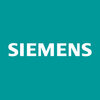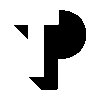Installation Engineer
20+ Installation Engineer Interview Questions and Answers

Asked in Bharti Airtel

Q. At what angle should you cut the fiber?
The question is unclear and lacks context. Please provide more information.
What type of fibre is being referred to?
What is the purpose of the angle cut?
What equipment or tools are being used for the installation?
What is the specific job or project that requires this information?

Asked in Bharti Airtel

Q. What is the color code for a 24-core fiber cable?
The color code of a 24 core fiber varies depending on the specific standard being followed.
The most commonly used color code for a 24 core fiber is based on the TIA/EIA-598 standard.
In this standard, the fibers are color-coded using a combination of colors and stripes.
The first 12 fibers are typically solid colors, while the remaining 12 fibers have a colored stripe on a white background.
The specific color sequence may vary depending on the manufacturer or installation requir...read more

Asked in Bharti Airtel

Q. What is fiber optic & FTTH known
Fiber optic is a technology that uses thin glass or plastic fibers to transmit data over long distances. FTTH stands for Fiber to the Home, which is a type of broadband internet service that uses fiber optic cables to deliver high-speed internet directly to homes.
Fiber optic technology uses light to transmit data instead of electrical signals
Fiber optic cables are made up of thin glass or plastic fibers that are bundled together
FTTH is a type of broadband internet service tha...read more

Asked in Team Lease

Q. What tools are used to identify cable faults?
The cable fault identify tool is known as a Time Domain Reflectometer (TDR).
A TDR is used to locate faults in cables by sending a pulse signal and measuring the reflections.
It can identify faults such as open circuits, short circuits, and impedance mismatches.
TDRs are commonly used in telecommunications, power distribution, and network installations.
Examples of TDRs include Fluke Networks OptiFiber Pro and Megger TDR2000/3P.
TDRs provide accurate distance-to-fault measurements...read more

Asked in Neologic Engineers

Q. How do you plan a project installation schedule?
To plan project installation schedule, consider project scope, resources availability, dependencies, and potential risks.
Define project scope and objectives
Identify all tasks and their dependencies
Estimate time required for each task
Allocate resources based on availability
Consider potential risks and develop contingency plans
Create a Gantt chart or project timeline
Regularly monitor and adjust schedule as needed

Asked in Team Lease

Q. How much power is supplied from OLT to OBD?
Power transmission from OLT to OBD involves understanding signal strength and loss over fiber optics.
OLT (Optical Line Terminal) typically outputs power around +1 to +5 dBm.
OBD (Optical Network Unit) receives signals, usually requiring -28 dBm to -8 dBm for optimal performance.
Power loss in fiber optics can be calculated using the formula: Loss (dB) = 10 * log10(P1/P2).
Example: If OLT outputs +3 dBm and OBD needs -20 dBm, the maximum allowable loss is 23 dB.
Installation Engineer Jobs




Asked in Bharti Airtel

Q. What is pon module? Where it is used?
PON module is a passive optical network module used in fiber optic communication systems.
PON stands for Passive Optical Network.
It is used in fiber optic communication systems to split the signal from a single fiber to multiple users.
PON modules are used in FTTH (Fiber to the Home) networks to provide high-speed internet, TV, and phone services.
They are also used in enterprise networks to connect multiple buildings or floors.
PON modules can be of different types such as GPON,...read more

Asked in Vehant Technologies

Q. Do you know about xbs machine and uvss machine.
XBS and UVSS machines are used for security purposes.
XBS machine is used for baggage screening at airports and other high-security areas.
UVSS machine is used for under-vehicle inspection at checkpoints and entrances.
Both machines use advanced technology to detect potential threats and ensure safety.
XBS machine uses X-ray technology to scan baggage and identify any suspicious items.
UVSS machine uses cameras and UV light to scan the underside of vehicles for hidden objects.
Inst...read more
Share interview questions and help millions of jobseekers 🌟


Asked in Neologic Engineers

Q. How do you handle pressure from customers?
I handle pressure from customers by staying calm, listening to their concerns, and finding solutions to address their needs.
Remain calm and composed when dealing with difficult customers
Listen actively to understand their concerns and address them effectively
Communicate clearly and professionally to manage expectations
Offer solutions or alternatives to resolve any issues
Seek assistance from colleagues or supervisors if needed
Asked in Technip Geoproduction (M) Sdn Bhd

Q. What are dynamic loads and static loads?
Dynamic loads are forces that change or move, while static loads are forces that remain constant.
Dynamic loads are forces that vary in magnitude and direction over time
Static loads are forces that remain constant in magnitude and direction
Examples of dynamic loads include wind gusts, moving vehicles, and vibrating machinery
Examples of static loads include the weight of a building, a parked car, and a stationary piece of equipment

Asked in Siemens

Q. How do we calculate the no-load current of a motor?
No load of a motor is calculated by measuring the current and voltage when the motor is running without any load.
Measure the current and voltage of the motor when it is running without any load
Use the formula P = VI to calculate the power consumed by the motor
Subtract the power consumed by the motor from the rated power of the motor to get the no-load power
No-load current is usually 20-40% of the full load current
No-load power is usually 5-10% of the rated power of the motor

Asked in TK Elevator

Q. How do you use a plumb bob for shaft measurement?
To drop plumb for shaft measurement, ensure the plumb bob is hanging freely and perpendicular to the ground.
Ensure the plumb bob is hanging freely without any obstructions
Make sure the plumb bob is hanging perpendicular to the ground
Use a level to confirm the plumb bob is straight
Measure the distance from the plumb bob to the shaft to determine alignment

Asked in Excitel Broadband

Q. How many types of internet wiring are there?
There are mainly three types of internet wiring: Ethernet, Coaxial, and Fiber Optic.
Ethernet wiring is commonly used for connecting devices within a local area network (LAN).
Coaxial wiring is often used for cable television and high-speed internet connections.
Fiber optic wiring uses light signals to transmit data at high speeds over long distances.

Asked in V5 Global Services

Q. How many types of fiber are there
There are two main types of fiber: soluble and insoluble, each serving different functions in the body.
Soluble fiber dissolves in water and can help lower blood cholesterol and glucose levels. Example: oats, beans, and apples.
Insoluble fiber does not dissolve in water and aids in digestion by adding bulk to stool. Example: whole grains, nuts, and vegetables.
Both types of fiber are essential for a healthy diet and can be found in various foods.

Asked in Bharti Airtel

Q. How many degrees is the angle?
The question is incomplete and unclear. Please provide more context.
Please provide more information about what you are asking.
Are you asking about the angle of a specific object or situation?
Without more context, it is impossible to answer this question.

Asked in Bharti Airtel

Q. What is fiber to the home?
Fiber to the home (FTTH) is a technology that provides high-speed internet access directly to residences using fiber optic cables.
FTTH delivers faster internet speeds compared to traditional copper wire connections.
It offers more reliable and consistent internet performance.
FTTH allows for symmetrical upload and download speeds.
Examples of FTTH providers include Verizon Fios, Google Fiber, and AT&T Fiber.

Asked in Vehant Technologies

Q. Tell me something about x-ray
X-ray is a form of electromagnetic radiation used for medical imaging and industrial inspection.
X-rays have shorter wavelengths than visible light
They can penetrate through soft tissues but are absorbed by denser materials like bones
X-ray machines emit controlled doses of radiation to produce images
X-rays are used in medical diagnosis, radiation therapy, and non-destructive testing in industries
Exposure to high levels of X-rays can be harmful to health

Asked in V5 Global Services

Q. How do you activate the device?
Activating a device involves following specific steps to ensure proper functionality and safety.
1. Read the user manual for specific activation instructions.
2. Ensure the device is properly connected to a power source.
3. Locate the power button and press it to turn on the device.
4. Follow any on-screen prompts for initial setup, such as language selection.
5. Connect to Wi-Fi or other networks if required for functionality.
6. Update the device firmware if prompted to ensure op...read more

Asked in Teleperformance

Q. What is the internet?
The internet is a global network of interconnected computers and servers that allows for communication, information sharing, and online activities.
The internet is a network of networks, connecting billions of devices worldwide.
It allows for communication through email, messaging, video calls, etc.
Information sharing through websites, social media, online forums, etc.
Online activities like shopping, gaming, streaming, etc.
Examples: Google, Facebook, YouTube, Amazon

Asked in KONE

Q. How do you balance an elevator?
Balancing an elevator involves adjusting the counterweights and the tension of the cables to ensure smooth and safe operation.
The counterweights must be adjusted to match the weight of the elevator car and its occupants.
The tension of the cables must be adjusted to prevent the car from bouncing or jerking during operation.
Balancing should be done periodically to ensure continued safe and efficient operation.
Failure to properly balance an elevator can result in excessive wear ...read more

Asked in Mitsubishi Elevators

Q. Stator and Rotor in motor
Stator is the stationary part of a motor that generates a magnetic field, while the rotor is the rotating part that interacts with the magnetic field to produce motion.
Stator is the stationary part of the motor, typically made of coils of wire that generate a magnetic field when electricity flows through them.
Rotor is the rotating part of the motor, usually connected to the shaft and magnets or coils that interact with the stator's magnetic field to produce motion.
The interac...read more

Asked in Polycab Wires

Q. What is Resistance?
Resistance is the opposition to the flow of electric current.
Resistance is measured in ohms (Ω).
It is caused by the collisions of electrons with atoms in a conductor.
Higher resistance leads to lower current flow.
Resistance can be affected by factors like material, length, and temperature.
Examples of high resistance materials include rubber and glass.
Examples of low resistance materials include copper and silver.

Asked in V5 Global Services

Q. How do you perform splicing?
Splicing involves joining two pieces of wire or cable to ensure a continuous electrical connection.
Identify the wires to be spliced and ensure they are clean and free of insulation.
Use a wire stripper to remove a small section of insulation from the ends of each wire.
Twist the exposed wire ends together securely to create a solid connection.
For added security, use electrical tape or heat shrink tubing to insulate the splice.
Test the connection with a multimeter to ensure cont...read more

Asked in Fleetx.io

Q. All explain allowance
Allowance is a sum of money paid regularly to cover expenses or losses.
Allowance is a fixed amount of money given regularly to cover expenses or losses.
It can be provided as part of a salary package or as a separate payment.
Examples include travel allowance, housing allowance, and meal allowance.

Asked in Bharti Airtel

Q. Fiber cutting angle
Fiber cutting angle refers to the angle at which a fiber optic cable is cut.
The cutting angle of a fiber optic cable is crucial for minimizing signal loss and ensuring efficient transmission.
A precise cutting angle is typically around 90 degrees to the fiber axis.
Improper cutting angles can lead to increased signal loss and poor performance of the fiber optic system.

Asked in V5 Global Services

Q. Router configuration
Router configuration involves setting up and optimizing network settings for efficient data transmission.
Understand the network requirements and goals
Choose the appropriate router model and hardware
Configure IP addresses and subnet masks
Set up security measures like firewalls and access control lists
Optimize routing protocols for efficient data transmission
Test and troubleshoot the router configuration
Interview Questions of Similar Designations
Interview Experiences of Popular Companies






Calculate your in-hand salary
Confused about how your in-hand salary is calculated? Enter your annual salary (CTC) and get your in-hand salary


Reviews
Interviews
Salaries
Users










